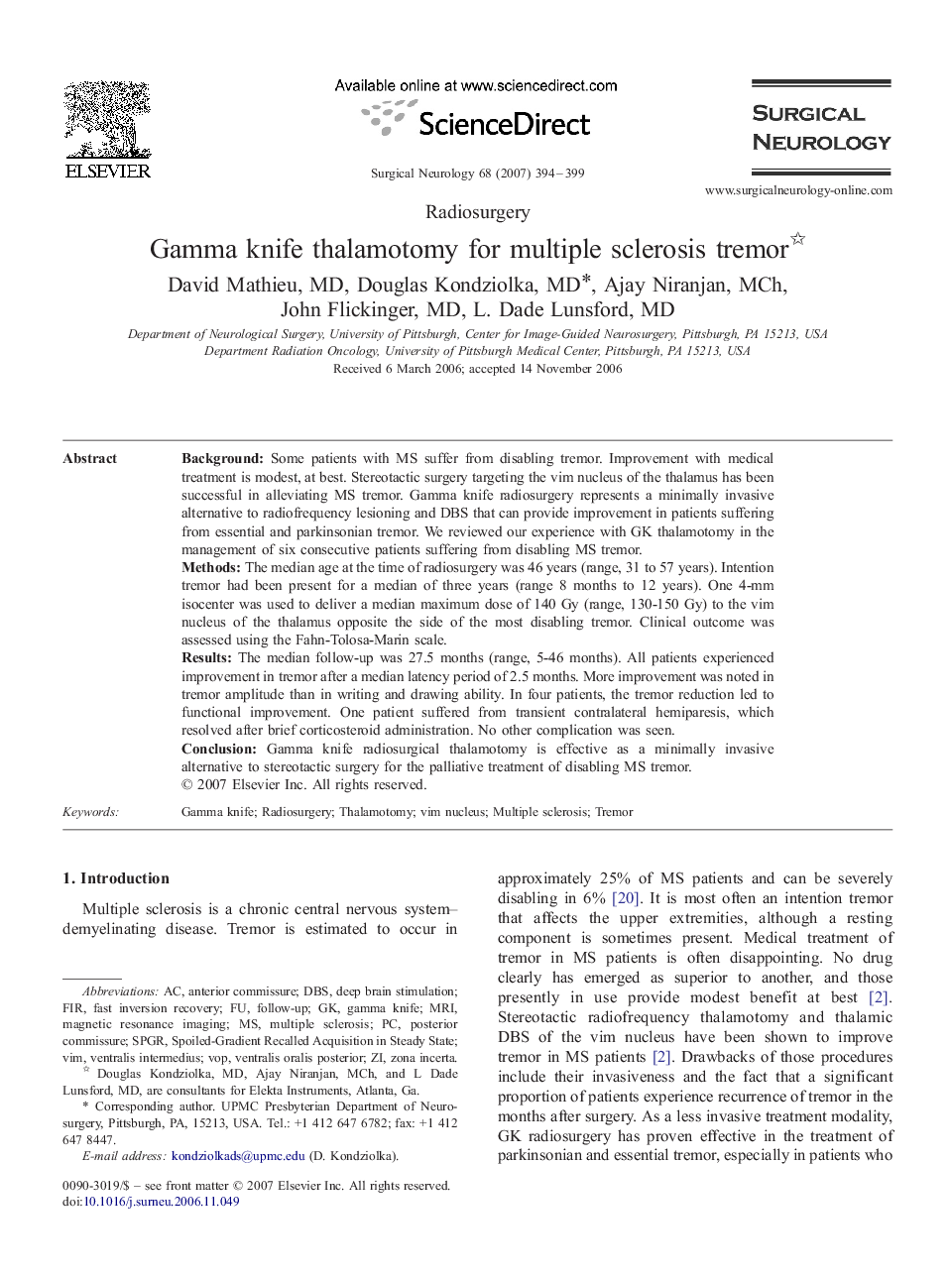| Article ID | Journal | Published Year | Pages | File Type |
|---|---|---|---|---|
| 3093392 | Surgical Neurology | 2007 | 6 Pages |
BackgroundSome patients with MS suffer from disabling tremor. Improvement with medical treatment is modest, at best. Stereotactic surgery targeting the vim nucleus of the thalamus has been successful in alleviating MS tremor. Gamma knife radiosurgery represents a minimally invasive alternative to radiofrequency lesioning and DBS that can provide improvement in patients suffering from essential and parkinsonian tremor. We reviewed our experience with GK thalamotomy in the management of six consecutive patients suffering from disabling MS tremor.MethodsThe median age at the time of radiosurgery was 46 years (range, 31 to 57 years). Intention tremor had been present for a median of three years (range 8 months to 12 years). One 4-mm isocenter was used to deliver a median maximum dose of 140 Gy (range, 130-150 Gy) to the vim nucleus of the thalamus opposite the side of the most disabling tremor. Clinical outcome was assessed using the Fahn-Tolosa-Marin scale.ResultsThe median follow-up was 27.5 months (range, 5-46 months). All patients experienced improvement in tremor after a median latency period of 2.5 months. More improvement was noted in tremor amplitude than in writing and drawing ability. In four patients, the tremor reduction led to functional improvement. One patient suffered from transient contralateral hemiparesis, which resolved after brief corticosteroid administration. No other complication was seen.ConclusionGamma knife radiosurgical thalamotomy is effective as a minimally invasive alternative to stereotactic surgery for the palliative treatment of disabling MS tremor.
